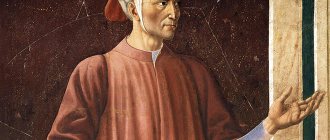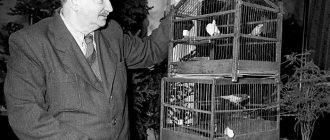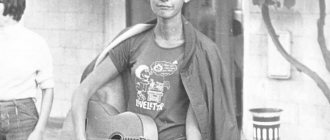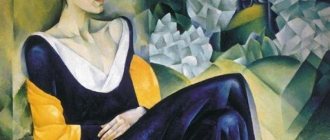Hans Christian Andersen: biography
There are few people in the world who are not familiar with the name of the great writer Hans Christian Andersen. More than one generation has grown up with the works of this master of the pen, whose works have been translated into 150 languages of the world. In almost every home, parents read fairy tales to their children before bed about the Princess and the Pea, the Spruce Tree and little Thumbelina, whom the field mouse tried to marry off to the greedy mole neighbor. Or children watch films and cartoons about the Little Mermaid or about the girl Gerda, who dreamed of rescuing Kai from the cold hands of the callous Snow Queen.
Portrait of Hans Christian Andersen
The world described by Andersen is amazing and beautiful. But along with magic and flights of fancy, there is a philosophical thought in his fairy tales, because the writer dedicated his creativity to both children and adults. Many critics agree that under the shell of Andersen’s naivety and simple narrative style lies a deep meaning, the task of which is to give the reader the necessary food for thought.
Childhood and youth
Hans Christian Andersen (common Russian spelling, Hans Christian would be more correct) was born on April 2, 1805 in the third largest city in Denmark - Odense. Some biographers claimed that Andersen was the illegitimate son of the Danish king Christian VIII, but in fact the future writer grew up and was brought up in a poor family. His father, also named Hans, worked as a shoemaker and barely made ends meet, and his mother Anna Marie Andersdatter worked as a laundress and was an illiterate woman.
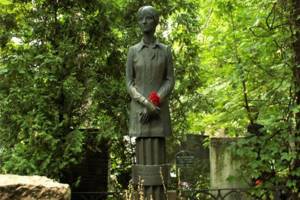
Hans Christian Andersen
The head of the family believed that his ancestry began from a noble dynasty: the paternal grandmother told her grandson that their family belonged to a privileged social class, but these speculations were not confirmed and were disputed over time. There are many rumors about Andersen’s relatives, which to this day excite the minds of readers. For example, they say that the writer’s grandfather, a carver by profession, was considered crazy in the town because he made strange figures of people with wings that looked like angels out of wood.
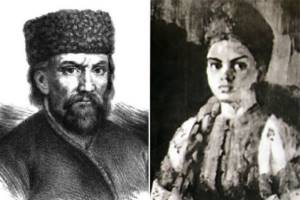
The house where Hans Christian Andersen was born and raised
Hans Sr. introduced the child to literature. He read “1001 Nights” to his son – traditional Arabic tales. Therefore, every evening little Hans plunged into the magical stories of Scheherazade. Father and son also loved to take walks in the park in Odense and even visited the theater, which made an indelible impression on the boy. In 1816, the writer's father died.
The real world was a harsh test for Hans, he grew up as an emotional, nervous and sensitive child. The local bully, who simply handed out blows, and the teachers are to blame for Andersen’s state of mind, because in those troubled times, punishment with canings was commonplace, so the future writer considered school an unbearable torture.

Storyteller Hans Christian Andersen
When Andersen flatly refused to attend classes, his parents sent the young man to a charity school for poor children. After receiving his primary education, Hans became an apprentice weaver, then retrained as a tailor, and later worked in a cigarette factory.
Relations with Andersen’s colleagues in the shop, to put it mildly, did not work out. He was constantly embarrassed by the vulgar anecdotes and narrow-minded jokes of the workers, and once, amid general laughter, Hans's pants were pulled down to make sure whether he was a boy or a girl. And all because as a child the writer had a thin voice and often sang during his shifts. This event forced the future writer to completely withdraw into himself. The young man's only friends were wooden dolls once made by his father.
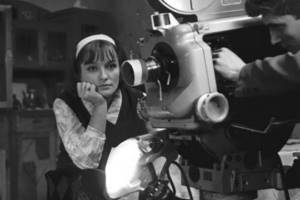
Hans Christian Andersen
When Hans was 14 years old, in search of a better life, he moved to Copenhagen, which at that time was considered the “Scandinavian Paris”. Anna Marie thought that Andersen would go to the capital of Denmark for a short time, so she let her beloved son go with a light heart. Hans left his father's house because he dreamed of becoming famous, wanted to learn the craft of acting and play on the theater stage in classical productions. It is worth saying that Hans was a lanky young man with a long nose and limbs, for which he received the offensive nicknames “stork” and “lamppost”.
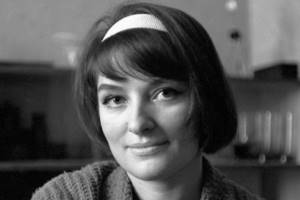
Hans Christian Andersen reading a book to children
Andersen was also teased as a child as a “play writer,” because in the boy’s house there was a toy theater with rag “actors.” An industrious young man with a funny appearance gave the impression of an ugly duckling who was accepted into the Royal Theater out of pity, and not because he had an excellent soprano voice. On the stage of the theater, Hans played minor roles. But soon his voice began to break, so his classmates, who considered Andersen primarily a poet, advised the young man to concentrate on literature.
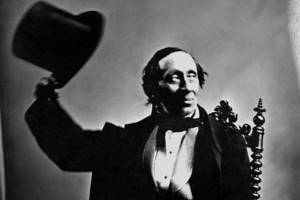
Hans Christian Andersen
Jonas Collin, a Danish statesman who was in charge of finances during the reign of Frederick VI, was very fond of the unlikeable young man and convinced the king to pay for the education of the young writer.
Andersen studied at the prestigious schools of Slagelse and Elsinore (where he sat at the same desk with students 6 years younger than himself) at the expense of the treasury, although he was not a zealous student: Hans never mastered literacy and made numerous spelling and punctuation errors all his life in a letter. Later, the storyteller recalled that he had nightmares about his student years, because the rector constantly criticized the young man to smithereens, and, as you know, Andersen did not like this.
Childhood
Hans Christian Andersen was born on April 2, 1805 in the small town of Odense, located on one of the Danish islands - Fionse. Andersen's grandfather, old man Anders Hansen , a woodcarver, was considered crazy in the city because he carved strange figures of half-humans - half-animals with wings. From childhood, Andersen was attracted to writing, although he did not do well at school, and until the end of his life he wrote with errors.
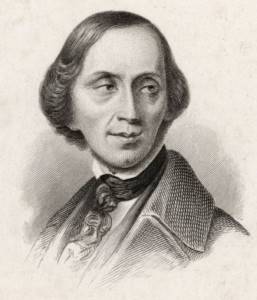
Hans Christian Andersen. Photo no later than 1850s. Photo: www.globallookpress.com
Literature
During his lifetime, Hans Christian Andersen wrote poems, stories, novels and ballads. But for all readers, his name is primarily associated with fairy tales - the master of the pen has 156 works on his record. However, Hans did not like to be called a children's writer, and stated that he wrote for both boys and girls, as well as for adults. It got to the point that Andersen ordered that there should not be a single child on his monument, although initially the monument should have been surrounded by children.
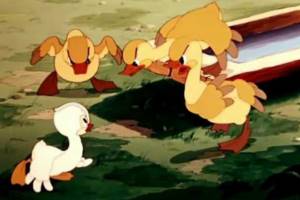
Illustration for Hans Christian Andersen's fairy tale “The Ugly Duckling”
Hans gained recognition and fame in 1829 when he published the adventure story “A Journey on Foot from the Holmen Canal to the Eastern End of Amager.” Since then, the young writer did not leave his pen and inkwell and wrote literary works one after another, including the fairy tales that made him famous, into which he introduced a system of high genres. True, novels, short stories and vaudevilles were difficult for the author - at the moments of writing, as if out of spite, he suffered a creative crisis.
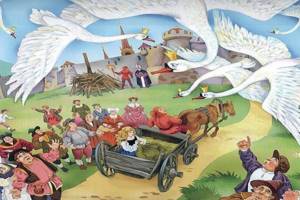
Illustration for Hans Christian Andersen's fairy tale “The Wild Swans”
Andersen drew inspiration from everyday life. In his opinion, everything in this world is beautiful: a flower petal, a small bug, and a spool of thread. Indeed, if you remember the works of the creator, then even every galosh or pea from a pod has an amazing biography. Hans was based both on his own imagination and on the motifs of the folk epic, thanks to which he wrote “Flint”, “Wild Swans”, “The Swineherd” and other stories published in the collection “Fairy Tales Told to Children” (1837).
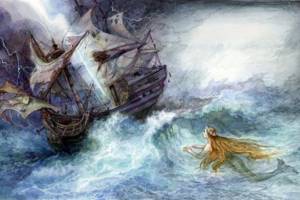
Illustration for Hans Christian Andersen's fairy tale “The Little Mermaid”
Andersen loved to make protagonists characters who are looking for a place in society. This includes Thumbelina, the Little Mermaid, and the Ugly Duckling. Such heroes evoke the author's sympathy. All Andersen's stories are imbued with philosophical meaning from cover to cover. It is worth remembering the fairy tale “The King’s New Clothes,” where the emperor asks two rogues to sew him an expensive robe. However, the outfit turned out to be complex and consisted entirely of “invisible threads.” The scammers assured the customer that only fools would not see the extremely thin fabric. Thus, the king parades around the palace in an indecent appearance.
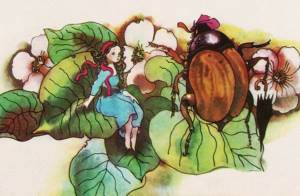
Illustration for Hans Christian Andersen's fairy tale “Thumbelina”
He and his courtiers do not notice the intricate dress, but are afraid to make themselves look like fools if they admit that the ruler walks around in what his mother gave birth to. This tale began to be interpreted as a parable, and the phrase “And the king is naked!” included in the list of popular expressions. It is noteworthy that not all Andersen’s fairy tales are imbued with luck; not all of the writer’s manuscripts contain the “deusexmachina” technique, when a random coincidence of circumstances that saves the main character (for example, the prince kisses the poisoned Snow White), as if by God’s will, appears out of nowhere.
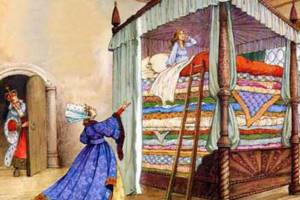
Illustration for Hans Christian Andersen's fairy tale “The Princess and the Pea”
Hans is loved by adult readers because he does not paint a utopian world where everyone lives happily ever after, but, for example, without a twinge of conscience he sends a steadfast tin soldier into a burning fireplace, dooming a lonely man to death. In 1840, the master of the pen tried his hand at the genre of miniature novellas and published the collection “Picture Book without Pictures,” and in 1849 he wrote the novel “Two Baronesses.” Four years later, the book “To Be or Not to Be” was published, but all of Andersen’s attempts to establish himself as a novelist were in vain.
Portraits of H.K. Andersen
Home → H.K. Andersen → PortraitsRandom excerpt from the text: Rainer Maria Rilke. Stories about the Lord God. How once a thimble happened to be the Lord God ... - This is all nonsense! Any thing can be the Lord God. You just need to tell her. “He turned to the red-haired boy who stood closest to him. - An animal cannot. It will run away. But the thing, you see, the thing remains in place; you enter the room, whether during the day or at night - it is always there; she will be a suitable Lord God. Little by little everyone became convinced of this. “We just need a small object that we can carry with us everywhere, otherwise all this makes no sense.” Come on, empty your pockets. Here we found a lot of very interesting things: scraps of paper, penknives, rubber bands, feathers, scraps of twine, pebbles, screws, whistles, wood chips and much more that you couldn’t see from afar and that I couldn’t name. And all these things lay on the children’s palms, as if in embarrassment from the unexpected opportunity to become the Lord God, and if any of them knew how to shine, then they sparkled to please Hans with all their might. It took a long time to choose. Finally, little Resi found the thimble that she had once stolen from her mother. He was bright, as if made of silver, and thanks to his beauty he became the Lord God. ... Full text
There are few paintings with portraits of the dear storyteller, and the reason for this is unknown to me, I can only state this fact. There are many more photographs of him, despite the fact that in Andersen's time the art of photography was just beginning to become popular.
All images are taken from the website of the Hans Christian Andersen Museum, which is part of the City Museum of Odense (the writer’s homeland) - Odense City Museums - Hans Christian Andersen Museum. They may not be used for commercial purposes without written permission from the museum.
You can click on the picture and open a new page with a larger illustration and more information about the picture.
The translation from English was done by me, the English text is provided for reference.
Vasily Petrovich
| Artist: Christian August Jensen, 1836 Location: Denmark |
| Artist: Karl Hartmann, November 20, 1845 Location: Gresten Castle, Denmark |
| Artist: August Grahl, March 1, 1846 Location: Dresden, Germany |
| Artist: Christian Albrecht Jensen 1847 Location: Denmark |
| Artist: not specified, 1852 Location: not specified. |
| Artist: Elisabeth Jerichau-Baumann, 1862 Location: Denmark. |
Personal life
The personal life of the failed actor, but eminent writer Andersen is a mystery shrouded in darkness. They say that throughout his existence, the great writer remained in the dark about intimacy with women or men. There is an assumption that the great storyteller was a latent homosexual (as evidenced by the epistolary legacy); he had close friendly relations with his friends Edward Collin, the hereditary Duke of Weimar, and with the dancer Harald Schraff. Although there were three women in Hans's life, things did not go beyond fleeting sympathy, not to mention marriage.
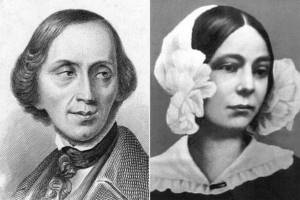
Hans Christian Andersen and Riborg Voigt
Andersen's first chosen one was the sister of his schoolmate Riborg Voigt. But the indecisive young man never dared to talk to the object of his desire. Louise Collin, the writer's next potential bride, suppressed any attempts at courtship and ignored the fiery stream of love letters. The 18-year-old girl chose a wealthy lawyer over Andersen.
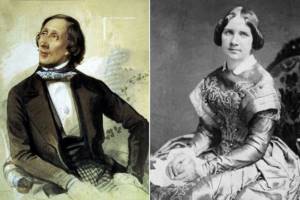
Hans Christian Andersen and Jenny Lind
In 1846, Hans fell in love with the opera singer Jenny Lind, who was nicknamed the “Swedish nightingale” because of her sonorous soprano. Andersen watched over Jenny behind the scenes and presented the beauty with poems and generous gifts. But the charming girl was in no hurry to reciprocate the storyteller’s sympathy, but treated him like a brother. When Andersen learned that the singer had married the British composer Otto Goldschmidt, Hans became depressed. Cold-hearted Jenny Lind became the prototype of the Snow Queen from the writer's fairy tale of the same name.

Illustration for Hans Christian Andersen's fairy tale “The Snow Queen”
Andersen was unlucky in love. Therefore, it is not surprising that the storyteller visited the red light districts upon his arrival in Paris. True, instead of debauching the night away with frivolous young ladies, Hans talked with them, sharing the details of his unhappy life. When one of Andersen’s acquaintances hinted to him that he was visiting brothels for other purposes, the writer was surprised and looked at his interlocutor with obvious disgust.
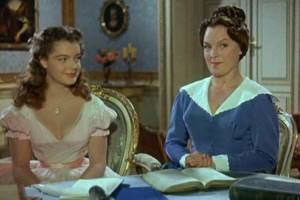
Monument to Hans Christian Andersen
It is also known that Andersen was a devoted admirer of Charles Dickens; the talented writers met at a literary meeting hosted by the Countess of Blessington in her salon. After this meeting, Hans wrote in his diary:
“We went out onto the veranda, I was happy to talk with the living writer of England, whom I love best.”
Ten years later, the storyteller returned to England and came as an uninvited guest to Dickens's house, to the detriment of his family. Over time, Charles stopped corresponding with Andersen, and the Dane sincerely did not understand why all his letters remained unanswered.
Last years and death

Hans Christian Andersen lived in difficult times. The man was lonely and strange. Life did not pass brightly, like his imagined world.
There are few known facts about the objects of his affections. Her awkward appearance did not evoke admiration from the opposite sex. The writer was indecisive and awkward in the presence of women.
The first love was unsuccessful - the girl did not reciprocate. Hans never took the decisive step to start a family.
The second and last love, opera singer Jenny Lind, perceived him as a friend. She married the composer, which completely broke her admirer’s heart.
Andersen fell into a prolonged depression due to unrequited feelings. The girl became the prototype of the heroine of the fairy tale “The Snow Queen”.
An adult man suffered from terrible phobias. It both frightened and surprised those around me. The writer always carried a rope with him in case of fire, he was afraid of poisoning. Furniture, especially beds, caused terrible fear.
The fear turned out to be prophetic. In 1872, he fell out of bed, received a severe bruise, and was treated for a long time. The author died on August 4, 1872 in Copenhagen.
He was buried in Assistance in the family plot. The writer’s place of residence is equated to a historical monument.
Death
In the spring of 1872, Andersen fell out of bed, hitting the floor hard, as a result of which he received multiple injuries from which he never recovered.
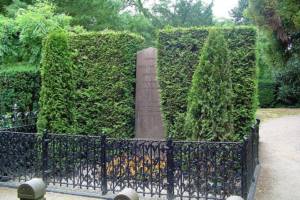
Hans Christian Andersen's grave
Later, the writer was diagnosed with liver cancer. On August 4, 1875, Hans died. The great writer is buried in Assistance Cemetery in Copenhagen.
Bibliography
- 1829 – “Journey on foot from the Holmen canal to the eastern cape of the island of Amager”
- 1829 – “Love on the Nicholas Tower”
- 1834 – “Agnetha and Vodyanoy”
- 1835 – “Improviser” (Russian translation – in 1844)
- 1837 – “Only the violinist”
- 1835–1837 – “Fairy Tales Told for Children”
- 1838 – “The Steadfast Tin Soldier”
- 1840 – “Picture Book Without Pictures”
- 1843 – “The Nightingale”
- 1843 – “The Ugly Duckling”
- 1844 – “The Snow Queen”
- 1845 – “The Little Match Girl”
- 1847 – “Shadow”
- 1849 – “Two Baronesses”
- 1857 – “To be or not to be”
